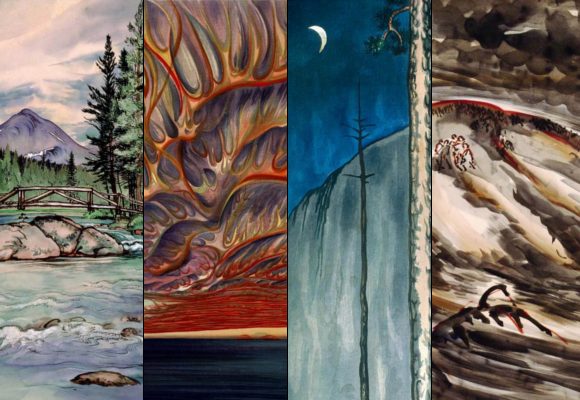
Chances are you’ve never heard of Chiura Obata. Well, all that changes now.
Chiura Obata was instrumental in bringing Japanese art styles like sumi-e and ukiyo-e to the West, but he’s not too well-known outside of the Japanese art world. He certainly deserves recognition however, not only for his place in art history, but for the difficulties he had to endure as well.
Obata was born in 1885 in Okayama Prefecture, Japan. He started learning traditional Japanese sumi-e painting at the age of seven, and as a teenager he apprenticed with several well-known artists in Tokyo, where he got his first taste of Western art styles.
At the age of 17, in 1903, Obata left Japan for the United States. He arrived in California where he worked as an illustrator and designer, but perhaps more notably also started painting landscapes throughout California, especially Yosemite, using traditional Japanese methods. His paintings blew the minds of Western artists at the time, and he was appointed as an instructor in the Art Department at the University of California, Berkeley in 1932.
But soon after Obata’s life hit a bump. During World War II, Obata, his wife, and over 100,000 other Japanese-Americans were forced into internment camps. But even there, Obata did his best to stay positive. He opened up an art school inside the relocation center he was assigned to, and there he helped hundreds of other prisoners find some hope and joy amidst their confinement.
After World War II, Obata was reinstated at UC Berkeley and promoted to associate professor of Art. In 1953 he became a naturalized U.S. citizen, and in 1965 he received the Order of the Sacred Treasure, 5th Class, Emperor’s Award, for his work helping to improve cultural understanding between the United States and Japan. He continued teaching art and leading tours of Americans to Japan until he died in 1975 at age 90.
Want to see how Obata viewed America? Take a look at some of his paintings:
▼ A sumi/watercolor rendition of Dana Creek in Yosemite Park, California.
▼ A colored woodblock print of Death’s Grave Pass and Tenaya Peak, also in Yosemite.
▼ Color woodblock print of El Capitan in Yosemite Valley.
▼ The Evening Moon in a color woodblock print.
▼ This abstract piece, Landslide, was created right after the bombing of Pearl Harbor.
▼ Silent Moonlight at Tanforan Relocation center shows Obata’s experience at the internment camp in haunting watercolor.
▼ This woodblock print, Life and Death, shows the ongoing cycle of nature.
▼ This sumi on silk painting shows a storm nearing the Yosemite government center.
▼ The Full Moon in Pasadena, California.
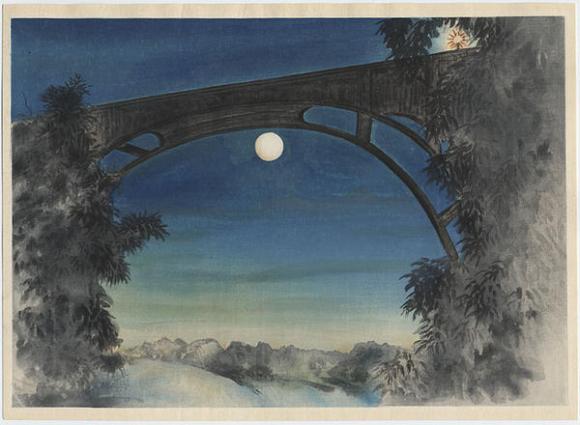
▼ And the Setting Sun in the Sacramento Valley.
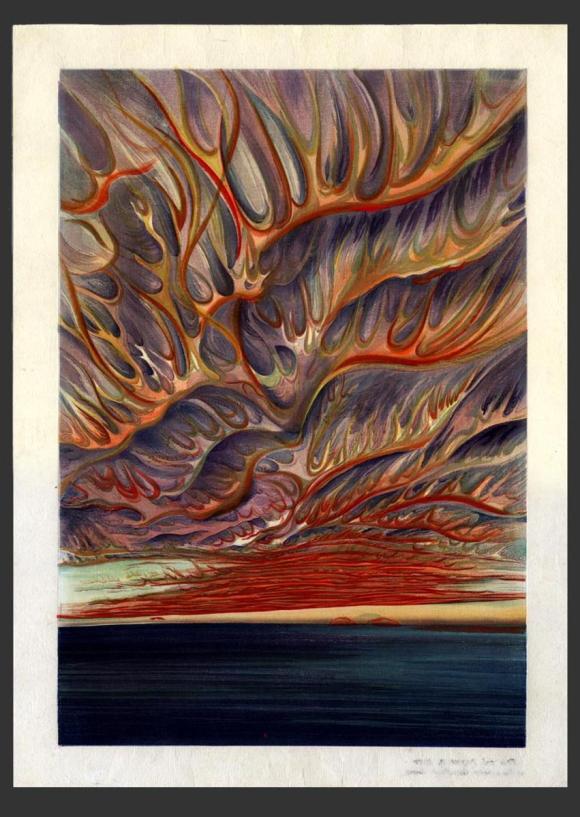
Obata’s work lives on to today, and his paintings are often shown at Yosemite Park and other museums around the world. His paintings are a symbol for the great things that can be accomplished when two cultures come together, as well as a reminder for the travesties that can occur when they clash.
Source: The Great Nature of Chiura Obata via Japaaan Magazine, Wikipedia
Insert images: The Great Nature of Chiura Obata
Featured/top image: The Great Nature of Chiura Obata, Japanese Woodblock Print Search (edited by RocketNews24)

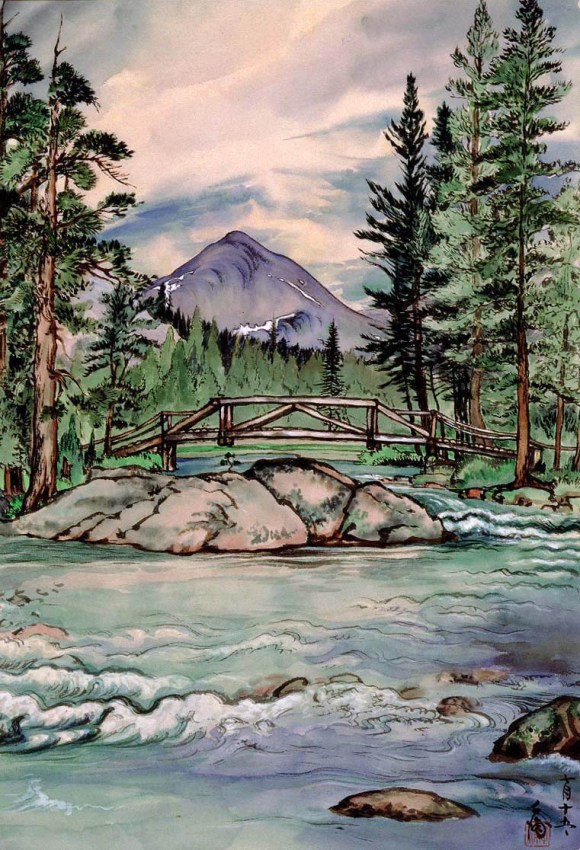
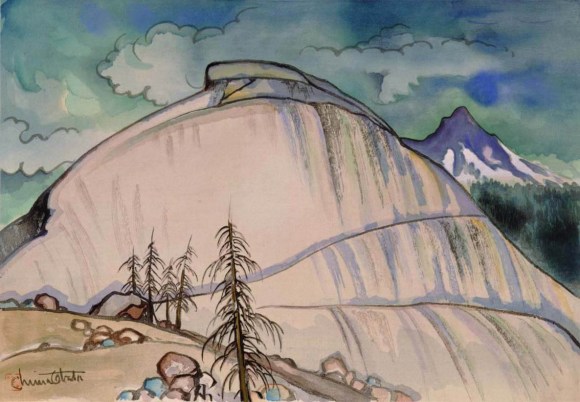
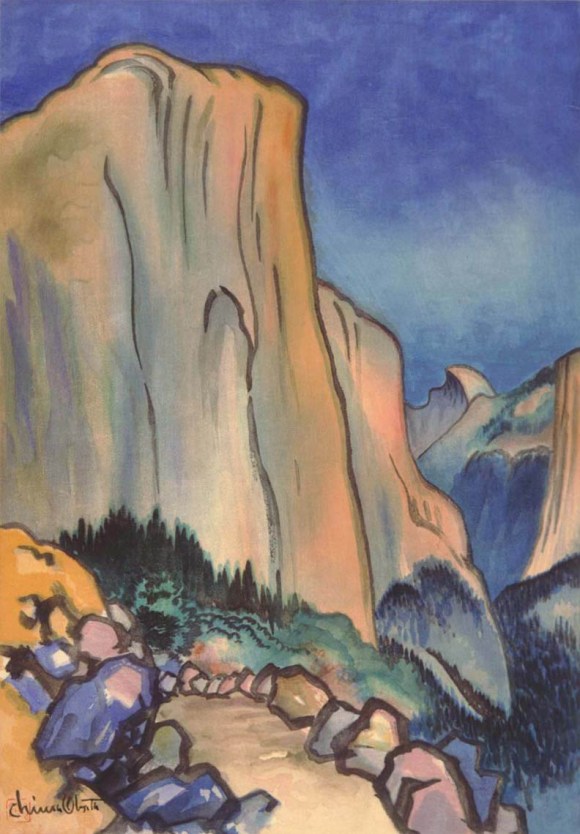
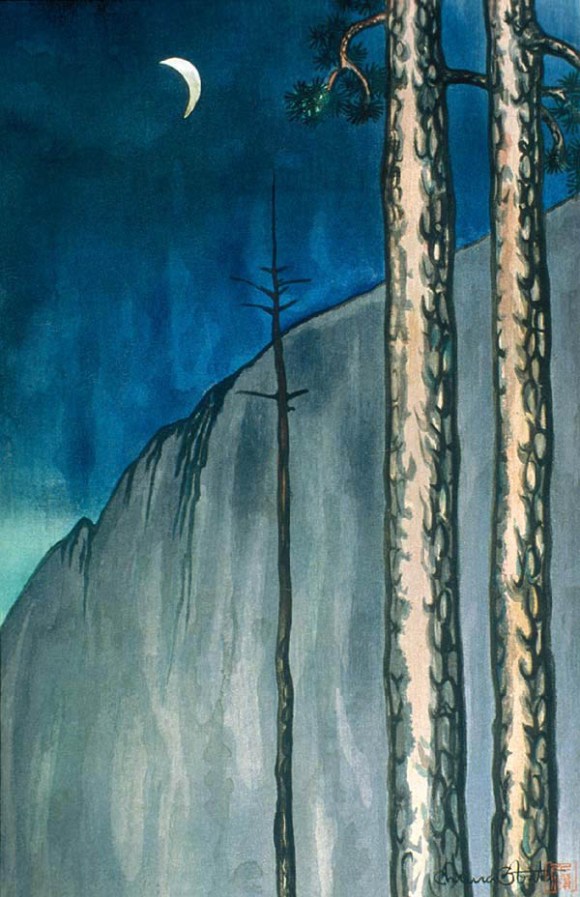
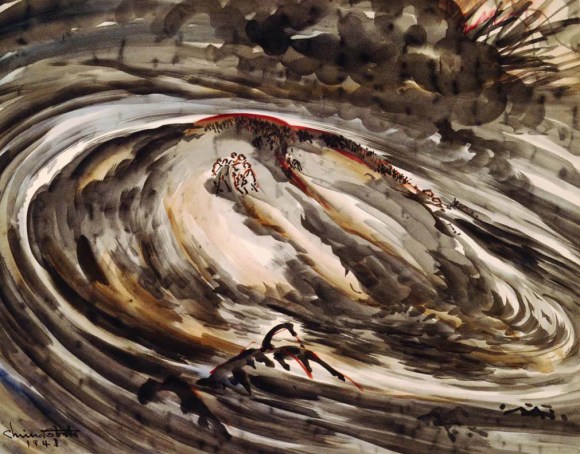
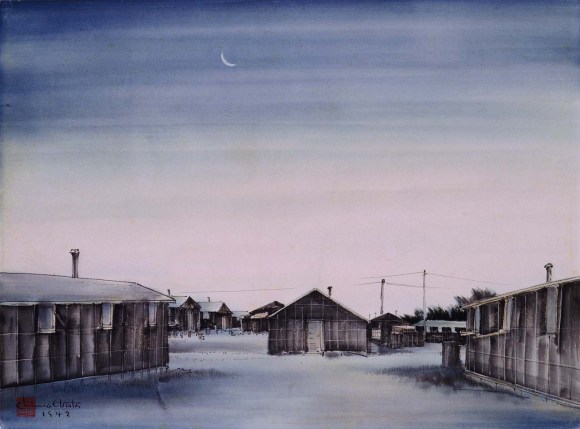
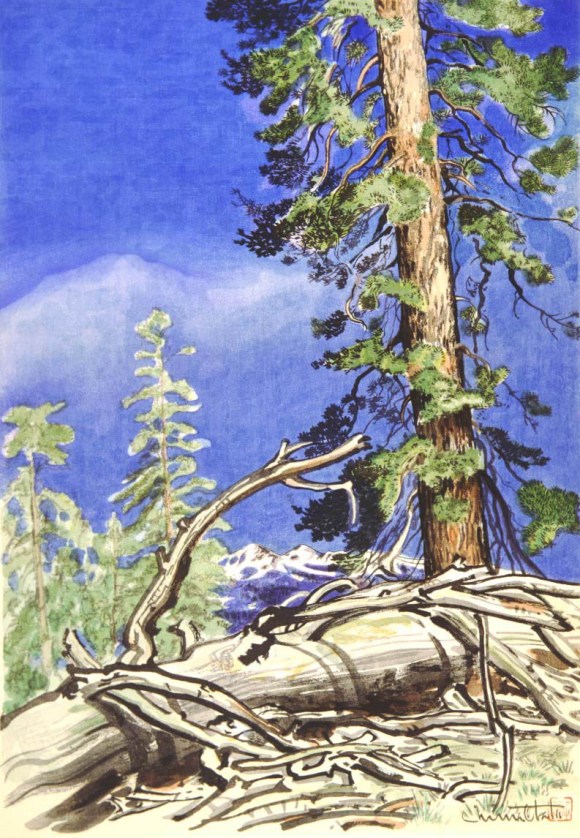
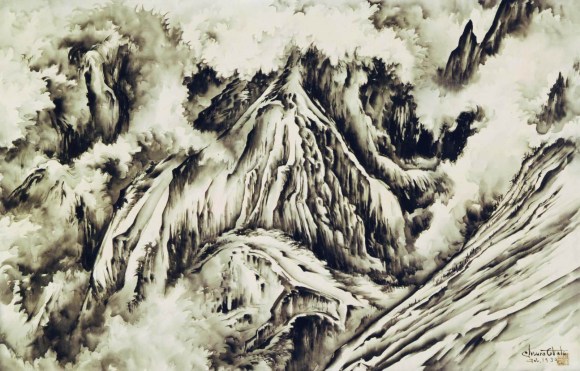
 Traditional artisans come together to create ukiyo-e enhanced Rolling Stones merchandise
Traditional artisans come together to create ukiyo-e enhanced Rolling Stones merchandise Artist recreates famous Japanese ukiyo-e paintings using fine wines
Artist recreates famous Japanese ukiyo-e paintings using fine wines Converse All-Stars team up with two all-stars of Japanese art for Wave, Skull ukiyo-e shoes【Pics】
Converse All-Stars team up with two all-stars of Japanese art for Wave, Skull ukiyo-e shoes【Pics】 Amazing photos show Mt. Fuji looking just like an ukiyo-e woodblock painting
Amazing photos show Mt. Fuji looking just like an ukiyo-e woodblock painting Adorable, whimsical pictures of animals painted by old-school Japanese masters
Adorable, whimsical pictures of animals painted by old-school Japanese masters Demon Slayer: Kimetsu no Yaiba gets new roller coaster attractions and food at Universal Studios Japan
Demon Slayer: Kimetsu no Yaiba gets new roller coaster attractions and food at Universal Studios Japan How to order snacks on a Shinkansen bullet train in Japan
How to order snacks on a Shinkansen bullet train in Japan Japan’s new difficult-to-drink-from beer glass protects your liver, but it’s a brutal experience
Japan’s new difficult-to-drink-from beer glass protects your liver, but it’s a brutal experience To combat declining birth rate, Japan to begin offering “Breeding Visas” to foreigners
To combat declining birth rate, Japan to begin offering “Breeding Visas” to foreigners Caffeinated ramen for gamers that you can eat with one hand going on sale in Japan
Caffeinated ramen for gamers that you can eat with one hand going on sale in Japan What’s Your National Stereotype? Japanese Sinking Ship Joke Has Got You Pegged
What’s Your National Stereotype? Japanese Sinking Ship Joke Has Got You Pegged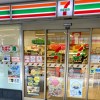 How to use the new floating hologram registers at 7-Eleven
How to use the new floating hologram registers at 7-Eleven New Japanese smartphone prohibits users from taking naked selfies
New Japanese smartphone prohibits users from taking naked selfies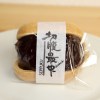 Suicide cakes – Sweets to die for
Suicide cakes – Sweets to die for High-fashion Totoro cuddle purse is like an elegant stroll in the forest【Photos】
High-fashion Totoro cuddle purse is like an elegant stroll in the forest【Photos】 Nintendo history you can feel – Super NES, N64, and GameCube controllers become capsule toys
Nintendo history you can feel – Super NES, N64, and GameCube controllers become capsule toys Hello, cosmetics! Clinique teams up with Hello Kitty this summer for first-time collaboration
Hello, cosmetics! Clinique teams up with Hello Kitty this summer for first-time collaboration “The most Delicious Cup Noodle in history” – Japan’s French Cup Noodle wins our heart【Taste test】
“The most Delicious Cup Noodle in history” – Japan’s French Cup Noodle wins our heart【Taste test】 Starbucks releases a cute Frappuccino and Unicorn Cake…but not in Japan
Starbucks releases a cute Frappuccino and Unicorn Cake…but not in Japan Kyoto Tower mascot termination reveals dark side behind cute Japanese characters
Kyoto Tower mascot termination reveals dark side behind cute Japanese characters McDonald’s Japan’s Soft Twist Tower: A phantom ice cream only sold at select branches
McDonald’s Japan’s Soft Twist Tower: A phantom ice cream only sold at select branches Yabai Ramen: What makes this Japanese ramen so dangerous?
Yabai Ramen: What makes this Japanese ramen so dangerous? Finally! Nintendo Japan expands Switch 8-bit controller sales to everybody, Online member or not
Finally! Nintendo Japan expands Switch 8-bit controller sales to everybody, Online member or not Japanese government wants to build luxury resorts in all national parks for foreign tourists
Japanese government wants to build luxury resorts in all national parks for foreign tourists 10 things you should buy at 7-Eleven in Japan
10 things you should buy at 7-Eleven in Japan Studio Ghibli releases anime heroine cosplay dresses that are super comfy to wear
Studio Ghibli releases anime heroine cosplay dresses that are super comfy to wear Woman charged for driving suitcase without a license in Osaka
Woman charged for driving suitcase without a license in Osaka Studio Ghibli unveils My Neighbour Totoro miniature house model
Studio Ghibli unveils My Neighbour Totoro miniature house model Kyoto experiencing problems with foreign tourists not paying for bus fares, but not on purpose
Kyoto experiencing problems with foreign tourists not paying for bus fares, but not on purpose Fighting mild hunger with a Japanese soda that turns into jelly in the stomach【Taste test】
Fighting mild hunger with a Japanese soda that turns into jelly in the stomach【Taste test】 Studio Ghibli’s Howl’s Moving Castle tapestry unveiled in Japan for first time
Studio Ghibli’s Howl’s Moving Castle tapestry unveiled in Japan for first time McDonald’s new Happy Meals offer up cute and practical Sanrio lifestyle goods
McDonald’s new Happy Meals offer up cute and practical Sanrio lifestyle goods Sales of Japan’s most convenient train ticket/shopping payment cards suspended indefinitely
Sales of Japan’s most convenient train ticket/shopping payment cards suspended indefinitely Sold-out Studio Ghibli desktop humidifiers are back so Totoro can help you through the dry season
Sold-out Studio Ghibli desktop humidifiers are back so Totoro can help you through the dry season Japanese government to make first change to romanization spelling rules since the 1950s
Japanese government to make first change to romanization spelling rules since the 1950s Foreigner’s request for help in Tokyo makes us sad for the state of society
Foreigner’s request for help in Tokyo makes us sad for the state of society Ghibli founders Toshio Suzuki and Hayao Miyazaki contribute to Japanese whisky Totoro label design
Ghibli founders Toshio Suzuki and Hayao Miyazaki contribute to Japanese whisky Totoro label design Doraemon found buried at sea as scene from 1993 anime becomes real life【Photos】
Doraemon found buried at sea as scene from 1993 anime becomes real life【Photos】 Tokyo’s most famous Starbucks is closed
Tokyo’s most famous Starbucks is closed Princesses, fruits, and blacksmiths: Study reveals the 30 most unusual family names in Japan
Princesses, fruits, and blacksmiths: Study reveals the 30 most unusual family names in Japan Mt. Fuji looks more like a suibokuga painting than real life in this amazing photo
Mt. Fuji looks more like a suibokuga painting than real life in this amazing photo Young Goku gets turned into adorable limited edition ukiyoe print!
Young Goku gets turned into adorable limited edition ukiyoe print! The surprising and little-known Japanese art of gyotaku: culinary prints made with real fish
The surprising and little-known Japanese art of gyotaku: culinary prints made with real fish Japanese art has never looked quite as beautiful as when it’s made out of Japanese beef【Photos】
Japanese art has never looked quite as beautiful as when it’s made out of Japanese beef【Photos】 Tokaido ukiyoe series by Hiroshige now free to share, we celebrate with five favourites
Tokaido ukiyoe series by Hiroshige now free to share, we celebrate with five favourites Manga creator/politician Ken Akamatsu opens political office/art gallery in Akihabara【Photos】
Manga creator/politician Ken Akamatsu opens political office/art gallery in Akihabara【Photos】 Give your cat culture and class with a beautiful ukiyo-e painting that’s also a scratching post
Give your cat culture and class with a beautiful ukiyo-e painting that’s also a scratching post Edo and Meiji era Japanese artwork now available for free download 【Pics】
Edo and Meiji era Japanese artwork now available for free download 【Pics】 Edo-era illustrated records show the disasters that have plagued Japan throughout its history
Edo-era illustrated records show the disasters that have plagued Japan throughout its history 10 things you didn’t know about geisha
10 things you didn’t know about geisha Iron Man masterfully rendered in suiboku-ga style evokes ancient feelings
Iron Man masterfully rendered in suiboku-ga style evokes ancient feelings Japan’s daruma dolls seem to be causing problems for horses at the Tokyo Olympics
Japan’s daruma dolls seem to be causing problems for horses at the Tokyo Olympics Pokémon GO melds with Tokyo’s traditional neighborhood for Asakusa Routes event, gets thumbs up from us
Pokémon GO melds with Tokyo’s traditional neighborhood for Asakusa Routes event, gets thumbs up from us Seiko’s blingtastic luxury watch based on Hokusai’s Great Wave costs a pretty yenny
Seiko’s blingtastic luxury watch based on Hokusai’s Great Wave costs a pretty yenny Death Note manga’s first new collected volume in 14 years announced
Death Note manga’s first new collected volume in 14 years announced
Leave a Reply